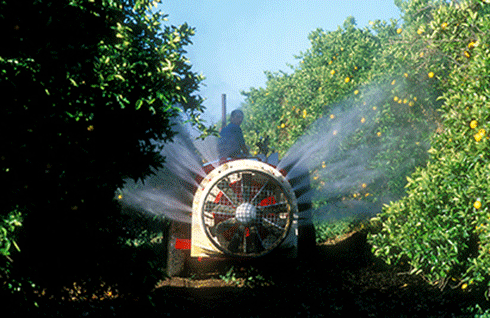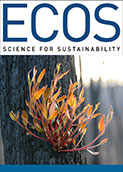
|
Published: 4 August 2014
Pesticide risk management made easier for Spanish-speaking world
Living in Australia, we tend to forget that more than 400 million people globally speak Spanish as a first language. Now, Spanish-speaking farmers and regulators have been given access to risk management software that will help them rate the impact of pesticide pollution on water resources.

|
|
Spraying oranges in an orchard at Griffith, New South Wales. Credit:
CSIRO
|
CSIRO’s free Pesticide Impact Rating Index (PIRI) tool rates the potential pollution risk of pesticides to surface and ground waters based on different land uses or industry type, at both catchment and regional scales. A 2005 independent evaluation of PIRI in Australia calculated its net benefit at $13.6 million, with a 37:1 return on investment.
CSIRO researcher Dr Rai Kookana says the new Spanish version of the tool vastly improves its accessibility across the globe.
‘PIRI has been successfully used in Australia for nearly a decade and, impressively, has been downloaded for use in 59 countries,’ says Dr Kookana.
‘The tool will now benefit farmers and practitioners in Latin America and other regions of the world.’
Most agriculturally developed countries rely, to some extent, on pesticides to enable economic production. In Australia alone, more than $1 billion worth of pesticides (herbicides, fungicides and insecticides) are applied each year.
The off-site effects of pesticides, such as contamination of water sources or impacts on biodiversity, are of increasing concern to growers, planners, resource managers, consumers, regulators and industry.
The CSIRO’s software tool determines whether there is a low, medium or high likelihood of a pesticide moving off-site under the prevailing conditions.
Dr Kookana says that in translating the tool to Spanish, the research team identified improvements to the earlier English version – such as updated pesticide information and pesticide degradation calculations, as well as simplified ways to input data and extract results from the tool.
PIRI has previously been customised for several Australian states, and now for developing countries in Asia as well as Latin America.
The development of the Spanish version was supported by the United Nations Food and Agriculture Organization/International Atomic Energy Agency Joint Programme (FAO-IAEA).
‘The UN FAO-IAEA have shown a lot of interest in PIRI and have funded workshops for us to train users in Central and Latin America’, said Dr Kookana.
Source: CSIRO



